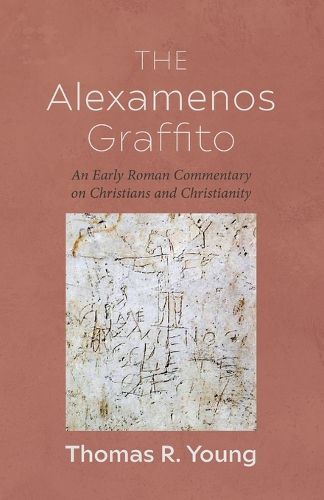Readings Newsletter
Become a Readings Member to make your shopping experience even easier.
Sign in or sign up for free!
You’re not far away from qualifying for FREE standard shipping within Australia
You’ve qualified for FREE standard shipping within Australia
The cart is loading…






This title is printed to order. This book may have been self-published. If so, we cannot guarantee the quality of the content. In the main most books will have gone through the editing process however some may not. We therefore suggest that you be aware of this before ordering this book. If in doubt check either the author or publisher’s details as we are unable to accept any returns unless they are faulty. Please contact us if you have any questions.
Since its discovery in 1857 in a room of the Pedagogium, a one-time imperial palace turned page school on the Palatine Hill in Rome, the Alexamenos Graffito has been one of the most widely known inscriptions attributed to early Roman attitudes toward Christianity. A sensation after its discovery, the Graffito was described by an international host of nineteenth-century writers and scholars; these descriptions of the Graffito's environment and the host of Latin and Greek graffiti served as fodder to fill guidebooks for the wealthy as they made their way through the then eponymous ""Grand Tour"" of Europe. But aside from being merely a tourist attraction, the Alexamenos Graffito has, over the past century and a half, proven to possess valuable insights into the sophistication of Imperial Rome, from the breadth and scope of Roman education; the techniques and mechanics of capital punishment; and the attitudes and practices utilized in Roman cult. This work provides readers the eyewitness accounts of the Graffito at the time of its discovery, the scholarly commentary that has helped us understand the meaning of the Graffito, and a context for understanding the world that surrounded Roman Christians in the third century.
$9.00 standard shipping within Australia
FREE standard shipping within Australia for orders over $100.00
Express & International shipping calculated at checkout
Stock availability can be subject to change without notice. We recommend calling the shop or contacting our online team to check availability of low stock items. Please see our Shopping Online page for more details.
This title is printed to order. This book may have been self-published. If so, we cannot guarantee the quality of the content. In the main most books will have gone through the editing process however some may not. We therefore suggest that you be aware of this before ordering this book. If in doubt check either the author or publisher’s details as we are unable to accept any returns unless they are faulty. Please contact us if you have any questions.
Since its discovery in 1857 in a room of the Pedagogium, a one-time imperial palace turned page school on the Palatine Hill in Rome, the Alexamenos Graffito has been one of the most widely known inscriptions attributed to early Roman attitudes toward Christianity. A sensation after its discovery, the Graffito was described by an international host of nineteenth-century writers and scholars; these descriptions of the Graffito's environment and the host of Latin and Greek graffiti served as fodder to fill guidebooks for the wealthy as they made their way through the then eponymous ""Grand Tour"" of Europe. But aside from being merely a tourist attraction, the Alexamenos Graffito has, over the past century and a half, proven to possess valuable insights into the sophistication of Imperial Rome, from the breadth and scope of Roman education; the techniques and mechanics of capital punishment; and the attitudes and practices utilized in Roman cult. This work provides readers the eyewitness accounts of the Graffito at the time of its discovery, the scholarly commentary that has helped us understand the meaning of the Graffito, and a context for understanding the world that surrounded Roman Christians in the third century.